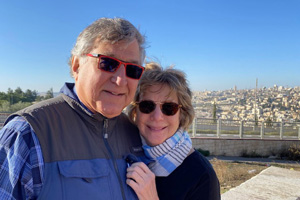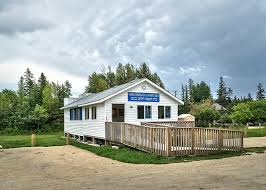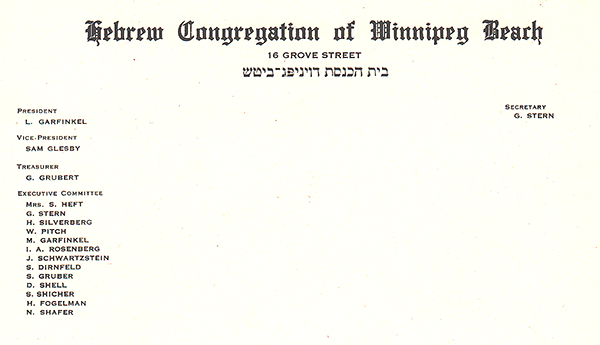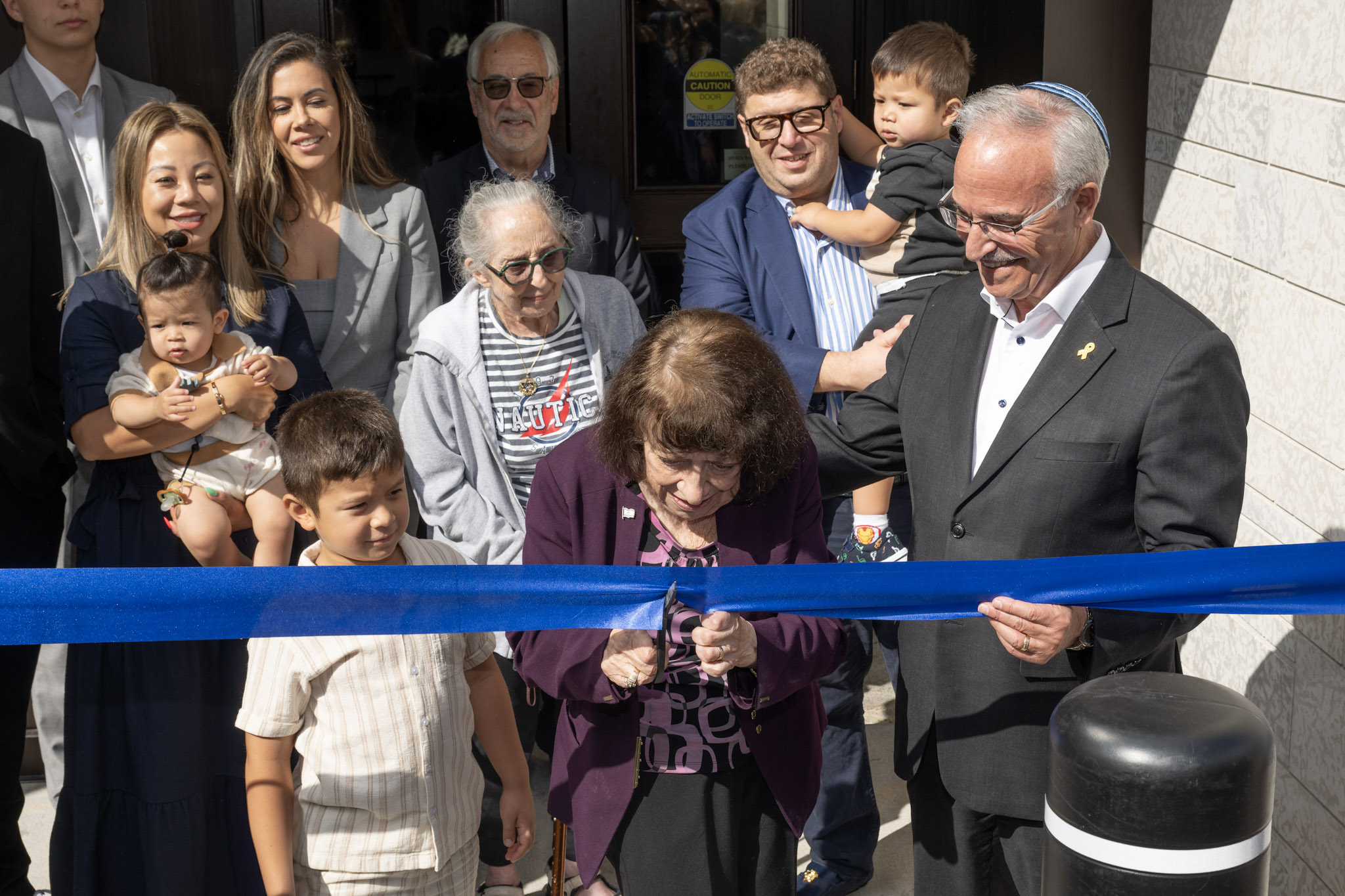Local News
Self-deprecating Ted Lyons to be this year’s Negev Gala honouree

By BERNIE BELLAN This year’s Jewish National Fund Negev Gala, on Monday, May 31, will be special for many reasons:
It will be the first Negev Gala here conducted entirely online.
It will be the first Negev Gala in Winnipeg in two years. (Last year’s had to be postponed because of Covid.)
It will be the first Negev Gala held in Winnipeg at which a medical physician will be honoured. (In 2018 the Alpha Omega Dental Fraternity was honoured as a collectivity.)
With all that in mind, it’s a special pleasure for me to be able to write about this year’s Negev Gala honouree, Dr. Ted Lyons – especially considering that he was supposed to have been honoured last year, but was unfortunately put in the position of having to wait an entire extra year to be honoured.
Ted Lyons is one of those rare individuals who has had a role in so many different areas of life, including many different aspects of medicine, to prominent leadership roles within our own Jewish community.
But, for anyone who has met Ted Lyons, despite his many accomplishments, his modesty and self-effacing manner come through immediately. As a matter of fact, in reading a short bio that he sent me I was often left laughing at the degree to which he was willing to admit his own rather extensive lack of success as a student before – and even while he was in university, until that is, he made it into medicine (on his second try).
It was when he was admitted into medical school here that Ted began to display a tremendous talent for being able to understand aspects of human anatomy that led him to be a pacesetter in the field of radiology with a worldwide reputation in the area of advanced ultrasound imagery.
But, just to give a taste of how much Ted Lyons hasn’t led success give him a swelled head, just read this excerpt from his bio when he discusses how close he was to being thrown out of Kelvin High School in Grade 12:
“I was in Miss Margaret Jean Thompson’s class for grade 12 and again was a very average student. I did not participate in any school activities but was active in AZA. I remember Reading Gullivers’ Travels and saying to a classmate as I walked into the classroom, that this was a child’s book. Miss Thompson began the class saying that this could either be taken as a child’s book or as a commentary on England in the 1800s. I felt stupid.
“At Christmas time Miss Thompson called me in into her office and said that I would never amount to anything and that I should leave school and go to get a job. I was flabbergasted as I had been a very average student but had never been a problem. I went home and told my parents what had happened. They came with me down to the school to meet with Mr. Fyles and with Miss Thompson. Mr. Fyles’ son was the dean of the medical school and my father knew him. The three of us sat across the desk with me in the corner. Part of the discussion, I remember, was me saying, “Why not let me come back? No one else will be using my seat.” They agreed to let me return after Christmas break. This must of had a profound effect on me but I still remained an average student for the end of grade 12.”
I told Ted that there was really so much rich material in his life story that it would be difficult to know what to include in this article. For the sake of brevity I’m leaving out other equally entertaining stories about Ted’s childhood. Suffice to say that it was a happy one – especially his many summers spent at the family cottage in Gimli, where Ted became an expert swimmer – and eventually a swimming instructor himself.
Moving on to Ted’s university years, once again he failed to demonstrate any apparent ability that might have suggested he was going to become a fabulously successful physician. Here’s what he has to say about his first attempt to get into medicine:
“I took three years of university in Science and got a BSc Bachelor of Science degree. I applied to Medicine, but my marks were not high enough, so I was not accepted. The average needed to be over 68.
“My dad suggested that I speak to the head of Medicine, Dr. John Gemmel, for his advice. He suggested I take Physiological Psych, a difficult course that would help me once I got into Med school. I decided to do a pre-masters in Zoology and apply again next year. One of my professors was Dr. Harvey Wiseman. I asked him the same question: ‘What should I take in order to get into Medicine?’ His answer was if you take physiologic psych you’ll never get in but rather you should take a bunch of half courses – which I did. They were amongst the best courses I had in university and served me well when I was in Medicine. One course was the History of Music where the professor said, ‘Don’t take any notes, just listen to the music and listen through my lectures. The exam will be the same as it was over the last three years. Get old exam questions and study them and you’ll pass.’ “
As events transpired, Ted did apply himself fully in Medicine. It was also during his time in medical school that he married Harriet Jacob, who went on to fashion her own career as a teacher and more recently, as a successful potter. Ted notes that Harriet “hand made all of the Mezzuzot for the Simkin Centre rooms and for the Gray Academy.”
Now, while reading about a doctor’s career is something that might not always make for the most scintillating reading, in Ted’s case he was at the forefront of so many breakthroughs in ultrasound technology that I would be remiss not to mention some of his achievements.
Again, here’s an excerpt from Ted’s bio: “In 1969 I entered radiology as a first-year resident and as a section head of Diagnostic Ultrasound. I continued in that role for 25 years. I introduced ultrasound in all Manitoba hospitals. I was the consultant to Manitoba Health on the orderly expansion of ultrasound. In other provinces there was less of a structured rollout of ultrasound services. There was also a rapid expansion of private practice ultrasound in other provinces but none in Manitoba. This made for a higher quality ultrasound service in Manitoba. I introduced all aspects of ultrasound examinations of the head, chest, heart, abdomen, pelvis and limbs.”
In 1996 Ted also began working with General Electric on the development of a new ultrasound machine that GE’s CEO at the time, Jack Welch, wanted to market – with the aim of making GE a world leader in the production of ultrasound machines. Ted was already a leading member of the RSNA (Radiology Society of North America), so when he decided to work with GE on the development of its ultrasound machines, he was able to convince the RSNA to have all its images come through the ultrasound department at the Health Sciences Centre, which had recently acquired 13 brand new ultrasound machines altogether for only $1 million.
(In 1996 the HSC purchased 13 of the new GE ultrasound scanners for only $1 million. Ted worked with GE to help improve and market their equipment, explaining that “They put a specialist in our department for 6 weeks and at the RSNA convention for the next 5 years all of the GE images came from our dept. Each year the GE Ultrasound CEO, myself and one other physician travelled around the world lecturing in at least a dozen cities.”)
Eventually, as is usually the case with any individual who has had an outstanding career in a rarefied field, the honours started to flow in for Ted Lyons.
In 2008, for instance, he was given the Order of Canada for Health Care while, in 2012, he was given the Queen Elizabeth Diamond Jubilee Medal.
In 2014 he was given the Saul Kanee Distinguished Community Service award by the Jewish Federation of Winnipeg.
In 2016 he was given a Lifetime Achievement Award by the University of Manitoba.
It was with his assuming the presidency of Shaarey Zedek Congregation in 1999 though, that Ted began a period of very active involvement in the Jewish community here that has continued unabated ever since.
At various times within the past 30 years Ted has served on the boards of: Canadian Friends of the Hebrew University, the Jewish Federation of Winnipeg (including a stint as president, from 2005-2007), United Israel Appeal Federations Canada, Jewish Foundation of Manitoba, Asper Jewish Community Campus, the Conservative Yeshiva Rabbinical School of Canada and, most recently, the board of the Simkin Centre.
It was during his period of involvement at the Simkin Centre, in particular, that Ted Lyons’ administrative skills were brought into play at a crucial time during what was a very troubling period for the Simkin Centre. Together with Jonathan Kroft, Ted was able to initiate a thorough review of every aspect of how the Simkin Centre was run, which led to a complete overhaul of systems management in every respect. In speaking of that period Ted pays great tribute to the contribution made by Elaine (Meller) Todres in coming up with the recommendations that paved the way for the management system that is now in place at the Simkin Centre.
When I spoke with Ted though, what I wanted to hear from him in particular was his affinity for Israel and the reason that the project for which funds from this year’s Negev Gala will go is of such special significance to both him and Harriet.
The project is titled “The Bervin JNF Canada House of Excellence”. To be built in Sderot, which is the community that has always been the most immediate target of missiles launched over the years from the Gaza Strip, this particular facility is intended to “serve as an after-school education, empowerment, and enrichment centre for high school students from Sderot and its surroundings, who will be provided with the necessary tools and skills for personal and scholastic success.”
Ted mentioned to me that this year, all JNF Galas across Canada are combining to allocate funds to this particular project. Of the overall cost of $4 million to build the Bervin House, over half will be coming from JNF Canada. And – of that amount, over $1.3 million has already been raised from Winnipeg donors.
In an email to me, JNF Manitoba-Saskatchewan Executive Director David Greaves, offered that the naming of the project “Bervin” is in honour of the late Berdie and Irvin Cohen, for which someone has donated $1 million (but who wishes to remain anonymous).
As to how Ted and Harriet became acquainted first hand with the Sderot project, Ted explains that, in the fall of 2019 he and Harriet were on a visit to Israel for their granddaughter’s bat mitzvah when they were taken by JNF on a visit to a similar project in Nof Hagalil. They were so impressed with what they saw going on at that project, Ted says, they decided that a similar project would be something with which they wanted to be involved.
I asked David Greaves whether the JNF is involved in similar projects around Israel? He responded: “Yes, Beit KKL as they are known generically. Ted and Harriet visited the first one at Nof HaGalil in 2019. The success of that one prompted KKL to commit to building a number of them in the periphery of Israel. The next one slated is the one that JNF Canada committed to partner with and which is now named Bervin JNF Canada House of Excellence.”
What excited Ted about the Bervin House project was that it will offer “kids in Sderot the extra schooling that will help them get into a better unit in the army or to get into university” – opportunities that are normally available only to kids in large urban centres in Israel.
Apparently it was when Russian immigrants to Israel began arriving en masse during the 1990s that the idea of setting up after school programs to offer students extra training, especially in subjects like math and science, and the idea of these special after-schools programs took hold.
Toward the end of my conversation with Ted Lyons I remarked upon the close friendships he has maintained over the years with a group of boys with whom he grew up, of whom some were: Michael Nozick, Elliot Rodin, Gerry Posner, Sheldon Gillman, Larry Booke, Arnold Popeski and Irv Tessler. (Ted also mentioned quite a few other names at various times as we talked. He said that he still maintains close friendships with almost everyone whom he was friends with when they were youngsters and that what he values most are the friendships he made while he was in AZA Toppers.)
“It was a small Jewish community – and our mothers were all friends,” Ted notes. “So we grew up together, we played together, we went to clubs together. In fact, six of us go together to Palm Springs in March (not last year or this year, he points out). We’ve all stayed friends over the years. We grew up in a special time – when you developed friends, and you stayed friends.”
As much as Ted Lyons has achieved well-deserved recognition for his many accomplishments, his attachment to Winnipeg and the friends with whom he grew up have kept him totally level-headed. He says that he had the opportunity to move to Toronto (as well as other cities in Canada and the US) and assume a very important position there, but in the end, he and Harriet realized that “family was important to us. I could do all the things I wanted to do career-wise here – and also get involved with the Jewish community here.”
“We are fortunate to have our children (Mara (Sheldon) and Sami (Rose)) and our five grandchildren in Winnipeg with us,” he adds.
As I came to the end of our conversation, I said to Ted that his story is such an interesting one – and he’s not afraid to poke fun at himself in telling it, that he ought to consider writing a memoir. I’m betting there would be a huge interest in reading the story of someone who has contributed so much to our community – all the while being able to look back with amusement at how unlikely a prospect that would have been when he was younger. If you’re younger – and thinking that there’s no hope for you to amount to anything of substance, take heart from Ted Lyons’ story. All that it took was avoiding taking a course in Physiological Psych in favour of some easy half courses – where the professor told you not to bother taking notes. If only I had known!
Local News
Thank you to the community from the Chesed Shel Emes

We’re delighted to share a major milestone in our Capital Campaign, “Building on our Tradition.” Launched in November 2018, this campaign aimed to replace our outdated facility with a modern space tailored to our unique needs. Our new building is designed with ritual at its core, featuring ample preparation space, Shomer space, and storage, creating a warm and welcoming environment for our community during times of need.
We’re grateful to the nearly 1,000 generous donors who contributed over $4 million towards our new facility. A $750,000 mortgage will be retired in November 2025, completing this monumental project in just seven years.
We’re also thrilled to announce that our Chesed Shel Emes Endowment Fund has grown tenfold, from $15,000 to $150,000, thanks to you, the Jewish Foundation of Manitoba’s FundMatch program, and Million Dollar Match initiative in 2024. Our fund helps ensure that everyone can have a dignified Jewish funeral regardless of financial need.
As we look to the future, our goal remains to ensure the Chevra Kadisha continues to serve our community for generations to come. Our focus now shifts to replenishing our savings account and growing our JFM Endowment fund.
We’re deeply grateful for your support over the past several years.
It’s our privilege to serve our community with care and compassion.
With sincere appreciation,
Campaign cabinet: Hillel Kravetsky, Gerry Pritchard, Stuart Pudavick,
Jack Solomon, and Rena Boroditsky
Murray S. Greenfield, President
Local News
Winnipeg Beach Synagogue about to celebrate 75th anniversary

By BERNIE BELLAN (July 13) In 1950 a group of cottage owners at Winnipeg Beach took it upon themselves to relocate a one-room schoolhouse that was in the Beausejour area to Winnipeg Beach where it became the beach synagogue at the corner of Hazel and Grove.
There it stayed until 1998 when it was moved to its current location at Camp Massad.
On August 2nd members of the synagogue will be holding a 75th anniversary celebration.

As part of the celebration anyone who is a descendant or relative of any of the original members of the first executive committee (as seen in the photo here) is invited to attend the synagogue that morning.
If you are a relative please contact Abe Borzykowski at wpgbeachshule@shaw.ca or aborzykowski@shaw.ca to let Abe know you might be attending or for more information about the 75th anniversary celebration.
We will soon be publishing a story about the history of the beach synagogue, which is something I’ve been writing about for over 25 years.
Local News
Vickar Family cuts ribbon on new Tova Vickar and Family Childcare Centre

By MYRON LOVE In the words of Larry Vickar, the Shaarey Zedek’s successful Dor V’ Dor Campaign “is not only a renewal of the synagogue but truly a renewal movement of Jewish life in our community.”An integral part of that renewal movement was the creation of a daycare centre within the expanded synagogue. On Monday, June 23, Larry and Tova Vickar cut the ribbon, thereby officially opening the Tova Vickar and Family Childcare Centre in the presence of 100 of their family members, friends and other supporters of the project.
The short program preceding the morning ribbon-cutting began with a continental breakfast followed by a welcome by both Fanny Levy, Shaarey Zedek’s Board President, and Executive Director Dr. Rena Secter Elbaze. In Elbaze’s remarks, she noted that Larry and Tova wanted their family (including son Stephen and family, who flew in from Florida) and friends at the event to celebrate the opening of the Tova Vickar and Family Childcare Centre, “not because of the accolades, but because, as Larry put it, he hopes that their investment in the congregation will inspire others to do the same.”
“When Larry and I spoke about what this gift meant to him and the message he wanted people to take away,” she continued, “I couldn’t help but connect it to the teachings of Reb Zalman Schachter-Shalomi whose book – Age-ing to Sage-ing – changes the whole way we look at the concept of ageing and basing it on our ancestral teachings.”
She explained that his concept of “Sage-ing” is based on three key ideas – Discover your meaning and purpose; accept our mortality and think about the legacy you want to leave.
“Larry spoke about these exact concepts when we met,” she said.
Elbaze also noted the presence of Shaarey Zedek’s newly-arrived senior Rabbi Carnie Rose, former Rabbi Alan Green, and area MLAs Mike Moroz and Carla Compton.
Larry Vickar expressed his great appreciation for all those in attendance. “Tova and I are deeply moved to stand here with you today for this important milestone in our community”, he said. “We are grateful to be surrounded by all of you, the people we care about, our family and friends… you who have touched our lives and played some part in our journey.”
